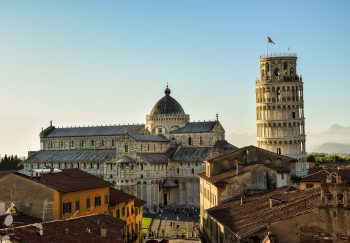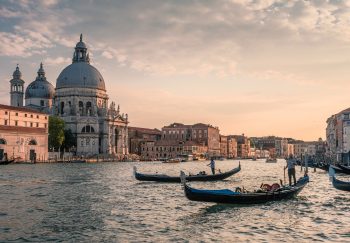Catania Old Town still echoes the glory of its Roman period through Piazza Stesicoro’s amphitheater, of which only a small portion has been revealed since the early 1900s
The structure’s largest portion actually lies below the via Neve, via Manzoni and via Penninello. These ruins were used to build some buildings around the square, including Villa Cerami, the headquarters of Law.
The original building was located on the outskirts the city, near the road that connected Catania with the hinterland and close the acropolis, where the Benedictine monastery is now. It was mostly made from lava stone and developed around an elliptical arena measuring 70 x 50 meters in size, which featured radial walls and vaults. The arches were constructed with large rectangular red bricks. The cavea, which consisted of 32 tiers that were separated by two corridors and then divided by small lava stones ladders, was likely made from limestone blocks. It was partially covered with marble. The building featured columns, bas-reliefs, and statues. A system of beams supported the fabric covering ( Velarium), which was fixed at the top to protect the spectators from the sun and rain.
The amphitheater of Catania, which was small at the time it was built (mid 1st Century AD), was later enlarged to 125 x105 m. This extension allowed it to host more than 15.000 people and made it the largest theater in the Roman world.
The building was abandoned in the 4th Century AD after the fall of the Roman Empire. It was occupied by craftsmen and merchants until the 7th and 8th centuries AD.
It was eventually reduced to a quarry. During the Sicilian Vespri the Angevins used its pedestrians to enter the city. The external arches of the building were then walled and the ambulatories filled with rubble. It was covered in many overlapping structures, and the theater’s memory was quickly lost.
The portion that was brought back to life is now open to the public. Some 3D reconstructions allow visitors to see the original building.
You can see the trailerof virtual reconstruction of the Roman Amphitheater
Learn more about the audioguide
izi.Travel audio tour











